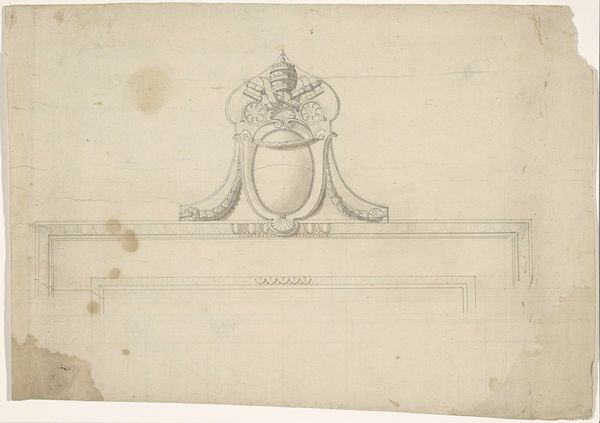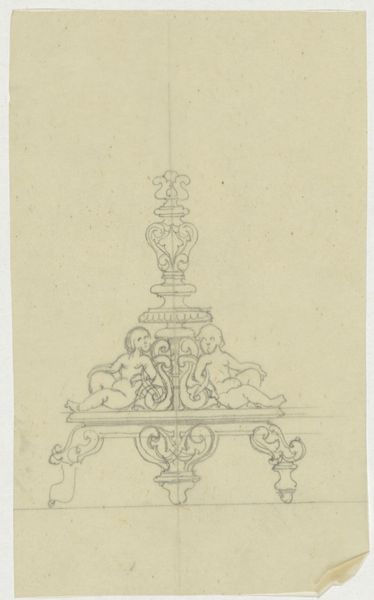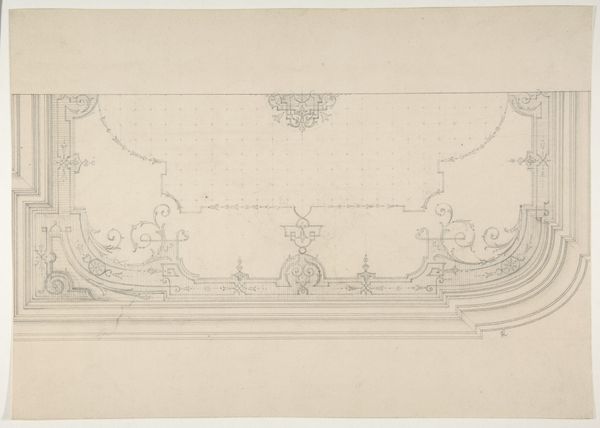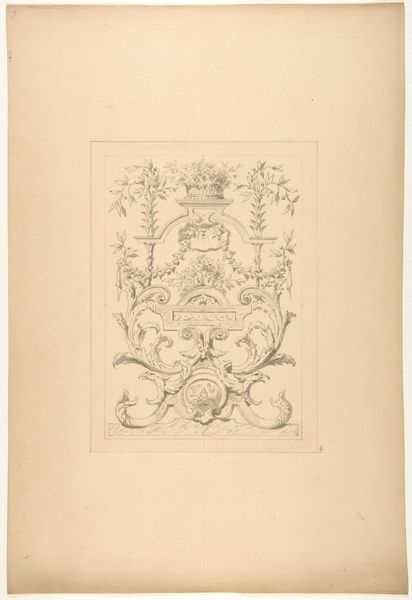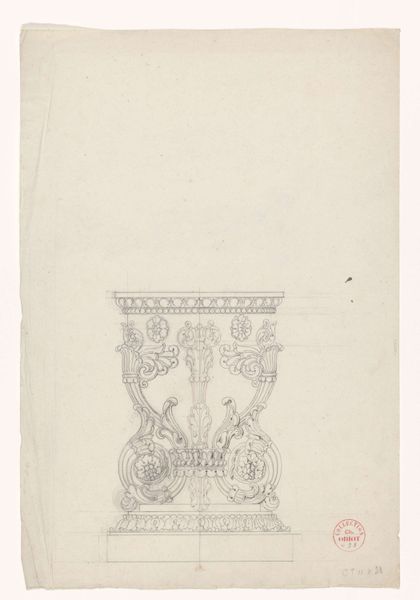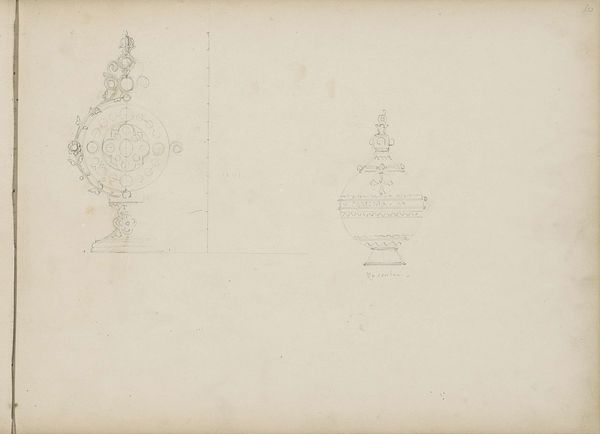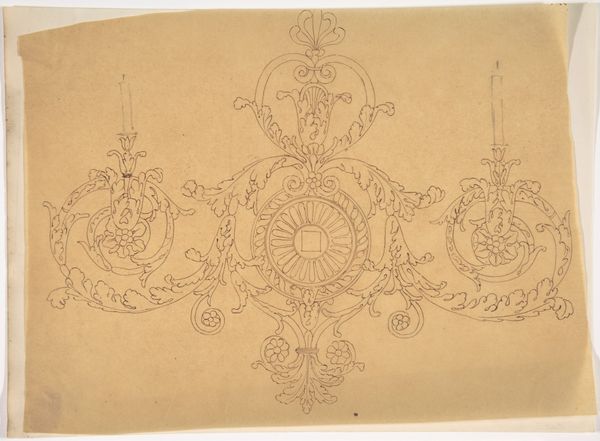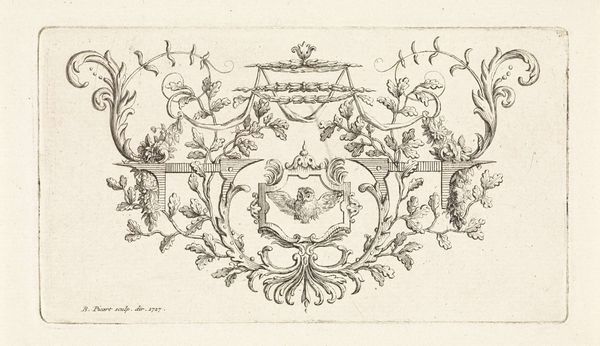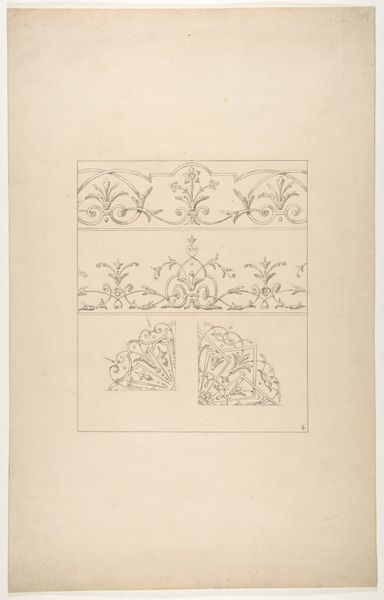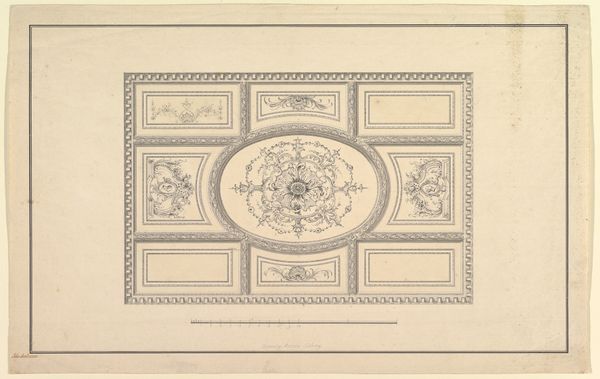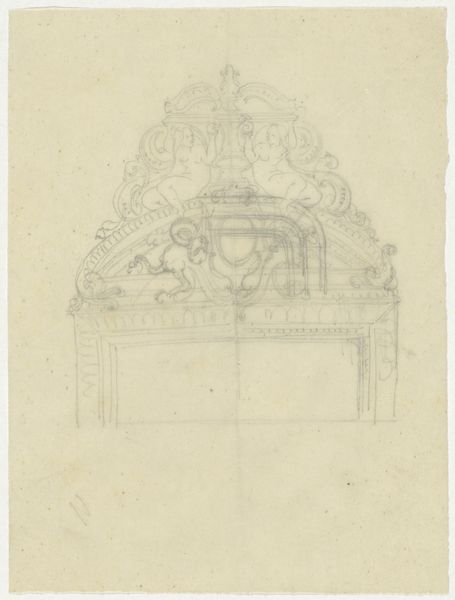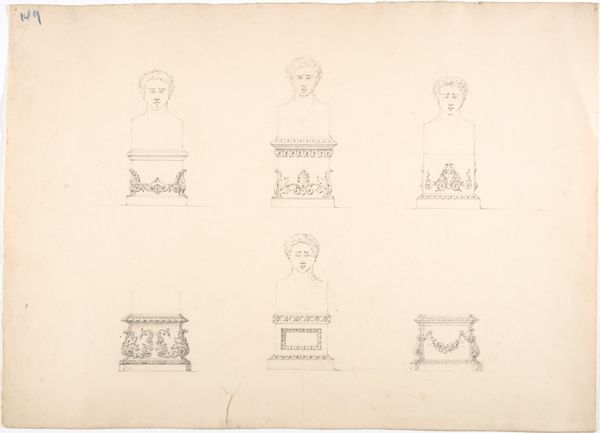
drawing, paper, pencil
#
drawing
#
neoclacissism
#
paper
#
form
#
geometric
#
pencil
#
line
Dimensions: height 333 mm, width 497 mm, height 444 , width 604
Copyright: Rijks Museum: Open Domain
Editor: Here we have a drawing titled “Ontwerp voor cloche (op ware grootte)” which translates to "Design for cloche (life size)" made around 1825 to 1830 by Charles-Nicolas Odiot, rendered in pencil on paper. It depicts a rather ornate dome-shaped object, meticulously drafted with fine lines. What strikes me is its precision and almost clinical attention to detail. How do you interpret this work within its historical context? Curator: This drawing offers a fascinating glimpse into the world of luxury object design in post-revolutionary France. Odiot was a prominent silversmith, and his designs were highly sought after by the restored Bourbon monarchy and the rising bourgeoisie. Neoclassicism, as seen here, became associated with imperial power and the taste for refined goods. This cloche design embodies that ambition for control and power over visual messaging through art and design. Editor: So, the cloche itself would have functioned as a symbol of status and wealth? Curator: Precisely. In commissioning elaborate pieces like this, the elite class sought to legitimize and solidify its position. This wasn't simply about functional objects, but about projecting an image of cultivated taste and, implicitly, power. What elements of the design do you think would specifically appeal to the political environment? Editor: The symmetry and ordered decoration do speak to the prevailing sense of wanting a return to order. The somewhat restrained, albeit rich, detailing of laurel leaves and the geometric shapes feels far away from the Rococo style that preceeded it, signaling an embrace of the new political order. Curator: Indeed. The choice of these motifs was deeply intertwined with socio-political aspirations. By understanding the historical context, we can understand a design drawing as a potent symbol within a complex social and economic structure, where art operates beyond mere aesthetics. Editor: I never considered that the seemingly straightforward design for a simple object like this could be so laden with historical and political meaning!
Comments
No comments
Be the first to comment and join the conversation on the ultimate creative platform.
